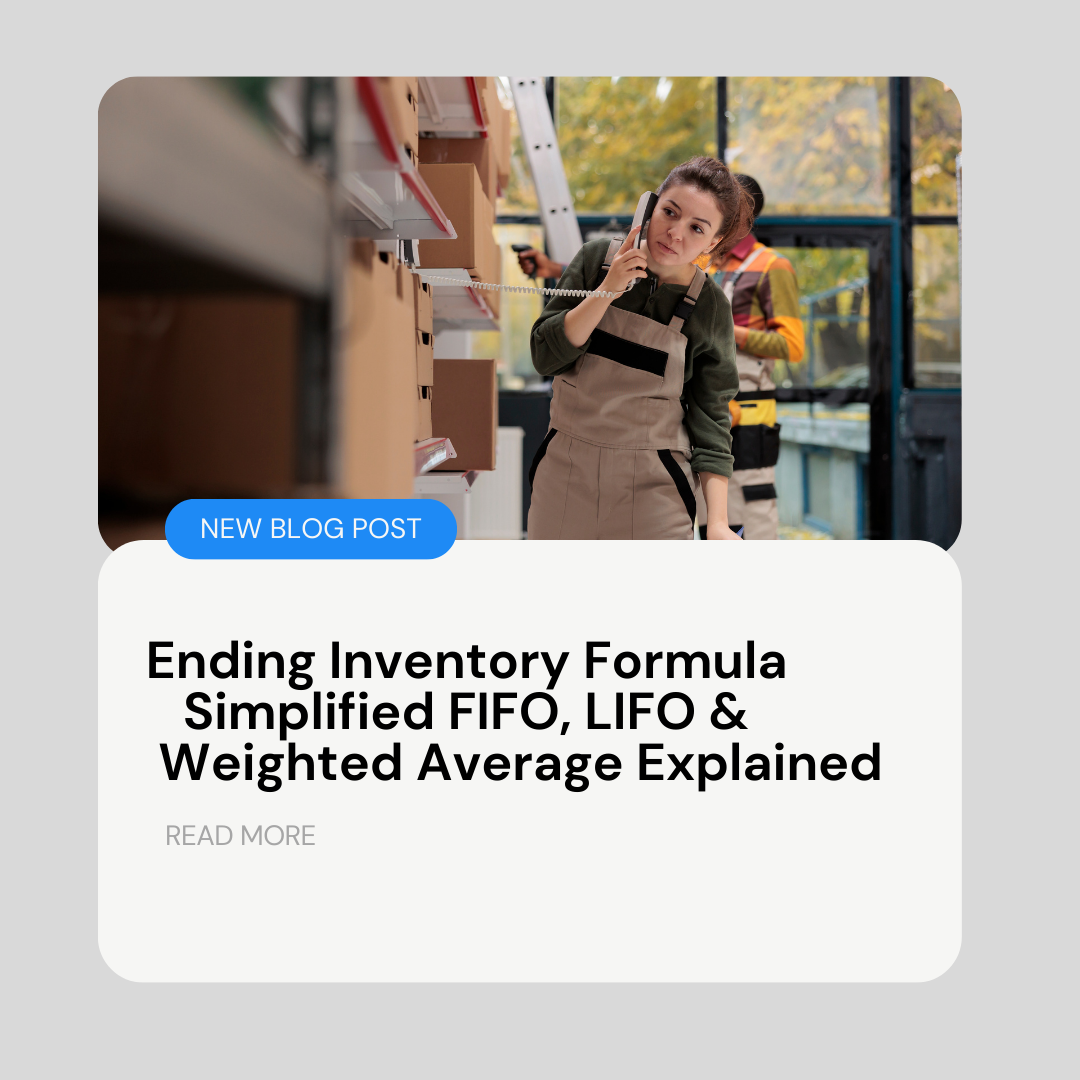Ending Inventory Formula Simplified FIFO, LIFO & Weighted Average Explained
Ending Inventory Formula Simplified FIFO, LIFO & Weighted Average Explained

Table of Contents
In today’s competitive supply chain and distribution landscape, inventory management stands at the heart of efficiency and profitability. Whether you’re a retailer, wholesaler, or logistics provider, knowing how to calculate and control inventory is essential. One of the most important components in this process is ending inventory—the amount of stock remaining at the end of an accounting period.
The formula for ending inventory is a fundamental tool used in accounting, finance, and logistics to ensure accurate reporting, reduce losses, and support strategic decision-making. Businesses that master this formula can improve cash flow, minimize stockouts, and optimize order fulfillment.
This guide will walk you through everything you need to know about ending inventory: its definition, importance, formula, methods of calculation, real-world applications, examples, and best practices for modern supply chains.
What is Ending Inventory?
Ending inventory refers to the value of goods available for sale that remain unsold at the end of an accounting period (month, quarter, or year). It is reported on a company’s balance sheet as a current asset and directly influences both the cost of goods sold (COGS) and overall profitability.
For example:
- A retail store with $200,000 worth of stock at the start of the month and $150,000 worth at the end of the month will record $150,000 as ending inventory.
- That figure helps determine how much was sold, how much revenue was generated, and whether stock levels are aligned with customer demand.
Why Ending Inventory Matters
Understanding and calculating ending inventory in warehouse is critical for several reasons:
- Financial Accuracy – Correctly valuing ending inventory ensures accurate financial statements and compliance with accounting standards.
- COGS Calculation – Ending inventory directly impacts the Cost of Goods Sold, which affects gross profit.
- Tax Implications – Inventory valuation affects taxable income, making accuracy essential for compliance.
- Supply Chain Efficiency – Helps businesses forecast demand, plan reorders, and prevent overstock or understock issues.
- Cash Flow Management – Excess inventory ties up cash, while too little inventory risks missed sales.
Formula for Ending Inventory
The general formula for ending inventory is:
Ending Inventory=Beginning Inventory+Purchases During the Period−Cost of Goods Sold (COGS)\text{Ending Inventory} = \text{Beginning Inventory} + \text{Purchases During the Period} – \text{Cost of Goods Sold (COGS)}
Where:
- Beginning Inventory = Value of stock at the start of the period.
- Purchases = Additional goods bought during the period.
- COGS = Value of goods sold during the period.
This simple formula helps businesses understand what remains unsold and available at the end of a financial cycle.
Example Calculation
Imagine a company starts January with $50,000 in inventory (Beginning Inventory). During the month, it purchases $30,000 worth of goods. The COGS calculated for January is $60,000.
Ending Inventory=50,000+30,000−60,000=20,000\text{Ending Inventory} = 50,000 + 30,000 – 60,000 = 20,000
So, the ending inventory is $20,000, which appears on the balance sheet.
Methods of Calculating Ending Inventory
While the formula provides a general approach, businesses may use different inventory valuation methods depending on accounting standards, industry requirements, and goals. The most common methods include:
- FIFO (First In, First Out)
- Assumes the oldest inventory is sold first.
- Ending inventory of the productss consists of the most recently purchased goods.
- Common in industries with perishable goods you want to sell (food, pharmaceuticals).
Example: If a company buys 100 units of any product at $10 each and another 100 units of products at $15 each, and sells 120 units, the 80 units of products remaining will be valued at $15 each (latest cost).
- LIFO (Last In, First Out)
- Assumes the newest inventory is sold first.
- Ending inventory consists of the oldest items.
- Common in industries with rising prices, as it reduces taxable income.
Example: Using the same numbers as FIFO, the remaining 80 units would be valued at $10 each.
- Weighted Average Cost
- Calculates an average cost per unit of the products by dividing total cost of goods available by total units available.
- Useful when inventory items are indistinguishable or interchangeable.
Example:
(100 × $10 + 100 × $15) ÷ 200 = $12.50 per unit.
If 80 units remain, ending inventory = 80 × $12.50 = $1,000.
- Specific Identification
- Each inventory item is tracked individually.
- Works best for high-value items (jewelry, cars, machinery).
Impact of Ending Inventory on Financial Statements
- Balance Sheet – Ending inventory is a current asset.
- Income Statement – It impacts COGS meanwhile and gross profit.
- Cash Flow – Overstock increases storage costs, while understock reduces sales.
Challenges in Calculating Ending Inventory
- Shrinkage – Theft, damage, or loss reduces actual stock.
- Obsolescence – Outdated items may lose value.
- Seasonality – Demand fluctuations affect accuracy.
- Human Error – Manual counting mistakes distort inventory data.
Best Practices for Managing Ending Inventory
- Use Inventory Management Software – Real-time tracking improves accuracy.
- Conduct Regular Cycle Counts – Prevents discrepancies between physical and recorded inventory.
- Adopt Just-in-Time (JIT) Systems – Minimizes holding costs and excess stock.
- Forecast Demand Accurately – Aligns purchases with sales trends.
- Standardize Valuation Method – Ensure consistency for financial reporting.
Real-World Applications of Ending Inventory
- Retailers: Monitor stock to prevent over-ordering.
- Manufacturers: Balance raw materials and finished goods.
- Wholesalers & Distributors: Maintain availability without tying up too much capital.
- E-commerce Sellers: Optimize fulfillment and storage costs.
The Role of Technology in Ending Inventory
Modern supply chain management integrates tools like:
- Barcode & RFID Tracking
- AI-powered Demand Forecasting
- Cloud-based ERP Systems
- Automated Reorder Points
These tools reduce errors, streamline inventory decisions and improve reporting.
Conclusion
The formula for ending inventory is a cornerstone of financial reporting and supply chain management. By mastering this formula and combining it with effective inventory practices, businesses can:
- Improve financial accuracy
- Optimize supply chain efficiency
- Prevent costly overstock or stockouts
- Maximize profitability
For businesses in distribution and logistics, accurate ending inventory is not just an accounting figure—it’s a strategic advantage.



